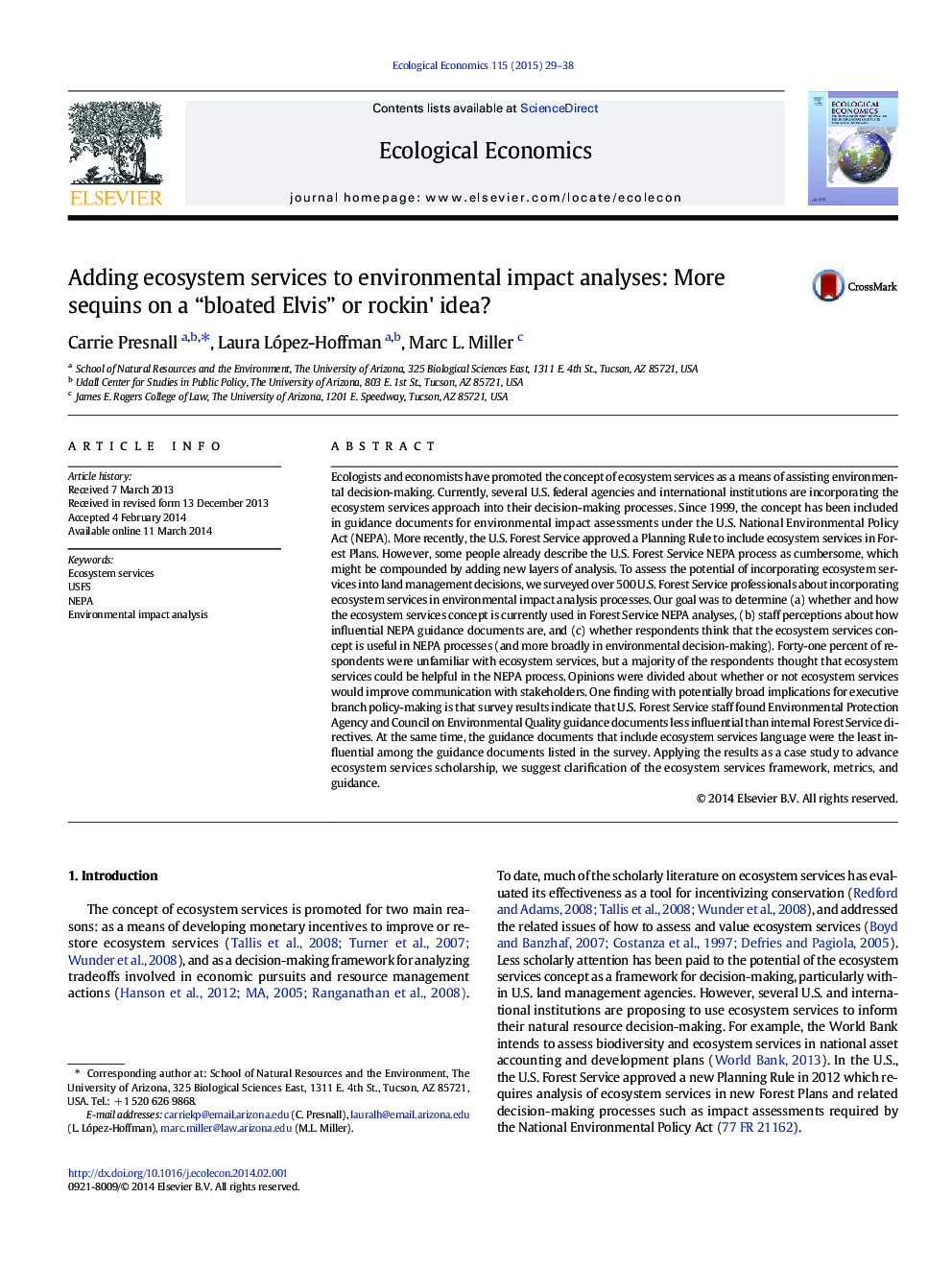| Article ID | Journal | Published Year | Pages | File Type |
|---|---|---|---|---|
| 5049313 | Ecological Economics | 2015 | 10 Pages |
â¢We assess the potential of using an ecosystem services approach in U.S. National Environmental Policy Act (NEPA) impact assessments.â¢We surveyed U.S. Forest Service staff who work on environmental impact analyses.â¢Survey results show that staff familiar with ecosystem services (ES) are more likely to think ES can be useful in NEPA.â¢Internal agency directives are more influential than general NEPA guidance documents.â¢Perceived obstacles include increased workloads and lack of methods for analyzing ecosystem services.
Ecologists and economists have promoted the concept of ecosystem services as a means of assisting environmental decision-making. Currently, several U.S. federal agencies and international institutions are incorporating the ecosystem services approach into their decision-making processes. Since 1999, the concept has been included in guidance documents for environmental impact assessments under the U.S. National Environmental Policy Act (NEPA). More recently, the U.S. Forest Service approved a Planning Rule to include ecosystem services in Forest Plans. However, some people already describe the U.S. Forest Service NEPA process as cumbersome, which might be compounded by adding new layers of analysis. To assess the potential of incorporating ecosystem services into land management decisions, we surveyed over 500 U.S. Forest Service professionals about incorporating ecosystem services in environmental impact analysis processes. Our goal was to determine (a) whether and how the ecosystem services concept is currently used in Forest Service NEPA analyses, (b) staff perceptions about how influential NEPA guidance documents are, and (c) whether respondents think that the ecosystem services concept is useful in NEPA processes (and more broadly in environmental decision-making). Forty-one percent of respondents were unfamiliar with ecosystem services, but a majority of the respondents thought that ecosystem services could be helpful in the NEPA process. Opinions were divided about whether or not ecosystem services would improve communication with stakeholders. One finding with potentially broad implications for executive branch policy-making is that survey results indicate that U.S. Forest Service staff found Environmental Protection Agency and Council on Environmental Quality guidance documents less influential than internal Forest Service directives. At the same time, the guidance documents that include ecosystem services language were the least influential among the guidance documents listed in the survey. Applying the results as a case study to advance ecosystem services scholarship, we suggest clarification of the ecosystem services framework, metrics, and guidance.
